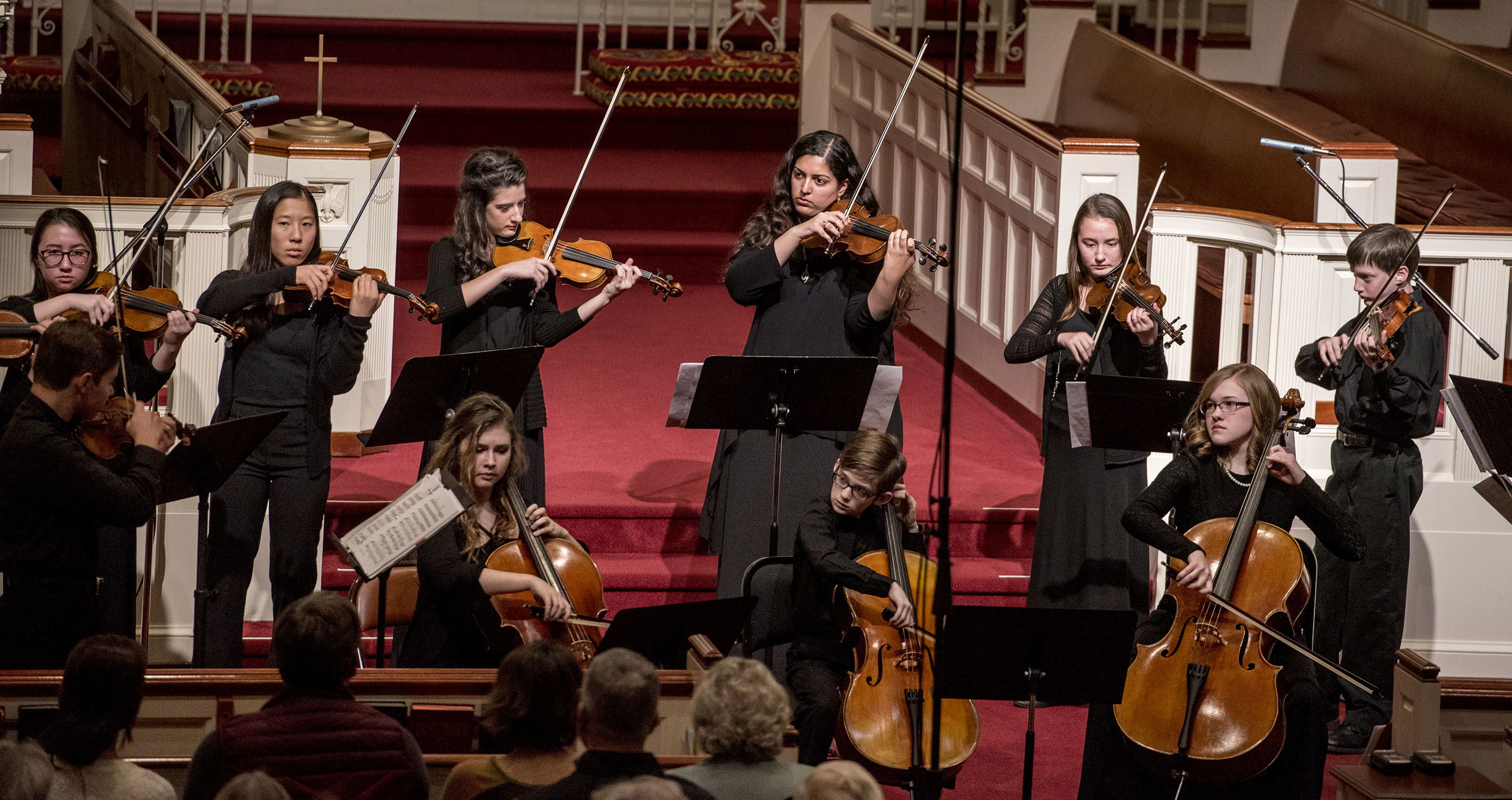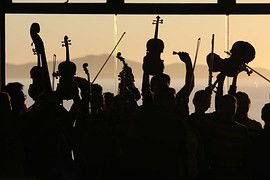How a String Orchestra Director Can Assess the Quality of the Orchestra

A skilled string orchestra director must be able to evaluate the quality of their ensemble to identify strengths and weaknesses. A great orchestra is more than just a collection of talented players—it is a unified group that produces a rich, balanced, and expressive sound. In this article, we’ll be looking at some of the essential ways a director can tell how good a choral group is. First, there will be the goal, followed by some constructive steps with which you can achieve those goals, in relative order.
1. GOAL - Intonation and Tuning One of the most fundamental aspects of a good orchestra is how well the musicians play in tune. The director should listen carefully for: Individual players matching pitch with each other. Sections maintaining consistent tuning, especially in unison or octave passages. The orchestra’s ability to adjust tuning when needed, particularly in modulations and chordal sections.
STEPS TO TAKE –
- Check whether Players are using proper finger placement. Each string instrument has its own unique challenges when it comes to finger placement. A violinist can over-correct too easily, especially when it involves half steps, since the distance between two half steps is relatively small. A cellist can under-correct because the distance between notes isn’t a very natural reach for fingers.
- Encourage the musicians to listen to each other. This practice works extremely well if there are section leaders in place; they should have their instruments in tune and have had enough experience to know how to play and stay in tune. The less experienced players can then model their playing after the section leaders.
- Teach the players how to make small pitch adjustments. The first step is to be sure that the back of the hand is flat. That will insure many more accurate notes to begin with. However, even with good hand posture, no one gets every note right all of the time. But knowing how to turn a bit of a vibrato into a miniature finger slide, among other pitch adjustment techniques, is a priceless skill to have.
2. GOAL - Tone Quality A high-quality orchestra produces a warm, rich, and full-bodied sound. The director should evaluate: Whether the players are holding the bow correctly. Whether the players are using proper bowing technique to create a smooth and even tone, including the level of bow pressure and speed being used to maintain a clear and resonant sound The amount of tension in the left hand.
STEPS TO TAKE –
- Remind the players about where the fingers and thumb should be placed and the amount of curve required for each digit. Help them realize that the hand will adapt naturally to the way the bow is used. Generally, during downstrokes, the fingers will be nice and curved, while during upstrokes they will be slightly elongated.
- Help the musicians eliminate scratchy noises by reminding them to keep the bow at the perfect location and angle on the string. The bow should be in contact with the string on the contact point exactly between the bridge and the fingerboard.
- Remind the players to keep their palm and wrist relaxed. They should not feel stiff or forced while you play. They should stay soft and relaxed, just like the fingers! This will not only improve the sound of the instrument but keep the musicians from having aching hands after playing.

3. GOAL – Rhythmic Accuracy and Ensemble Precision A strong orchestra must stay together rhythmically, meaning:
- Players keep a steady tempo..
- Musicians follow the conductor’s cues, and sections enter and cut off at the correct times.
- The orchestra maintains proper synchronization in fast and complex passages.
STEPS TO TAKE –
- It may be necessary to reinforce counting techniques. These include counting out loud, correctly dividing each note into its parts. This possibly would be done differently for different directors but the outcome would be the same. For instance, in 4/4 time, counting 1-2-3-4 for quarter notes, 1- hold 3-hold for two half notes, 1-and 2-and for two beats of eighth notes, etc.
- In order to follow the conductor’s cues well requires that the musicians know what is meant by each of them – proper downbeats, divided beats, cues, cutoffs, dynamic and temp changes, etc. Once those prompts are established, emphasize the necessity of following the conductor’s baton. See the article entitled Best Conducting Techniques for All Ensembles for a lot more information about conducting.
- The ability of the orchestra to maintain proper speed and be able to play as a unit relies primarily on its ability to not only follow the leading of the conductor, but to listen to each other, as individual players and as sections. There aren’t many exercises that can be done to improve this. It’s like a concert; a musical ensemble can rehearse endlessly, but it can only get better at giving concerts by going through the act of giving a concert. Musicians must consistently and intentionally concentrate on following the conductor’s baton or hands.

4. GOAL – Dynamic Control and Expression A good orchestra doesn’t just play notes—it plays music with feeling. An orchestra that plays with musical know-how and emotion will connect better with audiences. The director should listen for:
- Proper execution of dynamic markings (pianissimo to fortissimo, depending on the skill level of the group).
- Smooth transitions in passages with dynamics changes.
- Expressive phrasing and articulation that reflect the character of the piece.
STEPS TO TAKE -
- Practice different relative levels of loudness. Also, remind the musicians that an overall forte or piano may require different levels for each section. The violins will not be able to play their absolute loudest even for a fortissimo marking because they probably would drown out the basses, who would struggle to get a good forte out of their instruments, even for a fortissimo marking, unless there were a lot of them.
- Each piece of music that has one or more changes in dynamics will require its own amount and rate of change. A crescendo that take eight measures will be executed much differently than a crescendo over the space of a single measure that is placed with an upward run of eighth or sixteenth notes. Each occasion should be described to the orchestra and demonstrated by the conductor, “singing” the part if necessary. Then it should be rehearsed a number of times by itself, then as part of a larger section of the music.
- The director should explain the expressive phrasing and articulation in the music and how it reflects the character of the piece. If possible, current music could be used to help the musicians identify with mood of the piece. See the article entitled Successfully Teaching Dynamics to Teen Age Music Students for help with reinforcing this skill.
5. GOAL – Balance and Blend An excellent orchestra achieves a perfect blend of sound where no individual player sticks out inappropriately. The director should observe:
- Whether section leaders lead their sections well, play strongly enough to lead, but without overshadowing others.
- If harmony parts properly support the melody instead of overpowering it. Also, in the case of a polyphonic piece, each part should be heard equally so that the sound of the whole is understood by the listener.
- The way the orchestra balances when playing in different registers (high vs. low). Different registers have different tonalities and some instruments can overpower others, especially when playing in a higher register.
STEPS TO TAKE - - Even with the best section leaders, if the rest of the section isn’t seated properly around the leader, that leadership may be lost. If possible, a section leader should be as close to the center of the section as possible, yet visible to the others. The weaker player would be seated next to the leader so they can get the most benefit from the leader. That enable the section leader to play strongly to lead without being too loud.
- To ensure that the harmony parts properly support the melody, it is essential that everyone pay close attention to the conductor, since no musician, no matter how accomplished, can hear the finished blend from a seat in the middle of the orchestra. If the truth were to be told, the conductor probably doesn’t have the best advantage when it comes to hearing the whole sound of the whole orchestra. The best place to hear the balance is about thirty feet in front of the group, a little less for smaller ensembles. The musicians should be encouraged to listen to each other and adjust their volume accordingly to help create a more unified sound.
- To help the orchestra adjust their volumes to achieve a good balance, especially when playing in different registers, they again need to focus on the conductor, particularly at places with a change in dynamics. During rehearsals, it’s also a great idea to have the musicians memorize the volume of their own instruments as well as those around them when the balance is just right. This will help them more accurately reproduce that balance in concert.

6. GOAL – Bowing and Articulation Consistency A well-trained orchestra will have matching bowings and articulation across each section. The director should check for:
- Uniform bowing direction in string sections to ensure smooth and coordinated movement.
- Clarity in staccato, legato, spiccato, and other articulations.
- Players using appropriate bow placement (near the frog, middle, or tip) for different effects. When bowings are inconsistent, the sound can become muddled, so rehearsals should focus on unity and precision.
STEPS TO TAKE –
- There are two primary ways to ensure proper bowings – Good Communication and Consistent Rehearsals. The director should convey the desired results clearly ad accurately. This will vary, depending on the general skill level of the group (younger vs. older, inexperienced vs. experienced).
- The two ways listed above apply here as well – Communicate and Rehearse. One would think that all staccato playing would be the same. Sometimes, that’s not the case, mainly when it comes to staccato half notes, quarter notes and eighth notes. They each have their own length when played at face value and the amount of duration that’s removed from each note can change, depending on the tempo and style of the piece. The same is true of other articulations; each one should fit its “environment”.
- The proper, normal placement of the bow is about halfway between the bridge and fingerboard. Be sure that the musicians are using that bow placement consistently when playing most music. Then, if the score calls for something different, the conductor can instruct them about where the atypical bow placement should be so that the unusual sound will be homogenous throughout the section or orchestra.
7. GOAL – Responsiveness to Conducting An excellent orchestra follows the conductor’s guidance attentively. The director should notice:
- Whether musicians watch the baton or get lost in their own playing.
- How quickly the orchestra adjusts tempo, dynamics, or phrasing based on conducting cues.
- If musicians anticipate changes rather than react too late. An orchestra that actively responds to the conductor’s leadership will perform with greater cohesion and expression.
STEPS TO TAKE – - It has been said that an ensemble musician needs at least three eyes – two for the music, one for the conductor and one for fellow musicians or maybe the audience. In reality, it helps if the players have good peripheral vision. If not, they may need to memorize some of the music so that they can switch the focus of their vision from music to conductor.
- The first responsibility of good changes in tempo, etc. falls on the conductor. A good conductor will be sure that the changes are introduced a beat or two before they are to take place. The left hand will be raised as if to say, “Attention everyone, we’re going to…”. Of course, these changes should have been rehearsed well long before the concert, so that the pre-cues and cues will be easily understood by the orchestra. Of course, the second responsibility falls on the musicians themselves. A leader can lead only as well as the followers will follow.
- There is no truly obvious way to tell if the musicians anticipate changes well except to hear them execute those changes satisfactorily.

8. GOAL – Confidence and Stage Presence Beyond technical skill, the best orchestras play with confidence. A confident orchestra will captivate its audience and make a lasting impression. The director should assess:
- Whether musicians look engaged and focused instead of nervous or unsure.
- If players project their sound with energy rather than playing timidly.
- How the orchestra presents itself on stage, including posture and professionalism.
STEPS TO TAKE – - As was mentioned in GOAL #3 above, a musical ensemble can rehearse endlessly, but it can only get better at giving concerts by playing concerts. It may take a bit of verbal encouragement to persuade a musician that the concert is survivable, but most, if not all, musicians eventually gain the confidence they need by proving it in a concert setting.
- Even though the word “vibe” has been greatly overused, there is a certain vibe, feeling or impression that the music gives when it’s played with conviction and passion.
- Posture and professionalism must be well communicated, defined and practiced. This takes an active interest on the part of the director as well as the musicians.
Conclusion A string orchestra director can determine the quality of their ensemble by listening for intonation, tone, rhythm, expression, balance, bowing, responsiveness, and confidence. By identifying areas for improvement and working on them consistently, the orchestra can develop into a truly exceptional group that plays with precision and musicality.
There have been a number of references to rehearsing for the improvement of certain skills. For an excellent method for successful rehearsing techniques, see the end of the article entitled The World of Music - Part One.
Salt Cellar Creations understands the beauty and power that a String Orchestra can convey and the challenge that orchestra directors face in choosing the best music for their ensemble. SCC has a growing library of original works and arrangements to help meet the needs of string orchestra teachers and directors Find out more about what Salt Cellar Creations has to offer for String Orchestras HERE. Explore the available music HERE.
SCC can also compose an original piece for you or do a custom arrangement for you to allow you to showcase your group. There are two ways that this can be done; one is much more affordable than the other. CONTACT US for more information. And SCC is always looking for ideas of pieces to arrange or suggestions for original pieces.
We have written and arranged music for groups not only in the US but also in Canada, the United Kingdom, France, Australia, New Zealand, and Austria. Please CONTACT US to let us know what we can do for you!